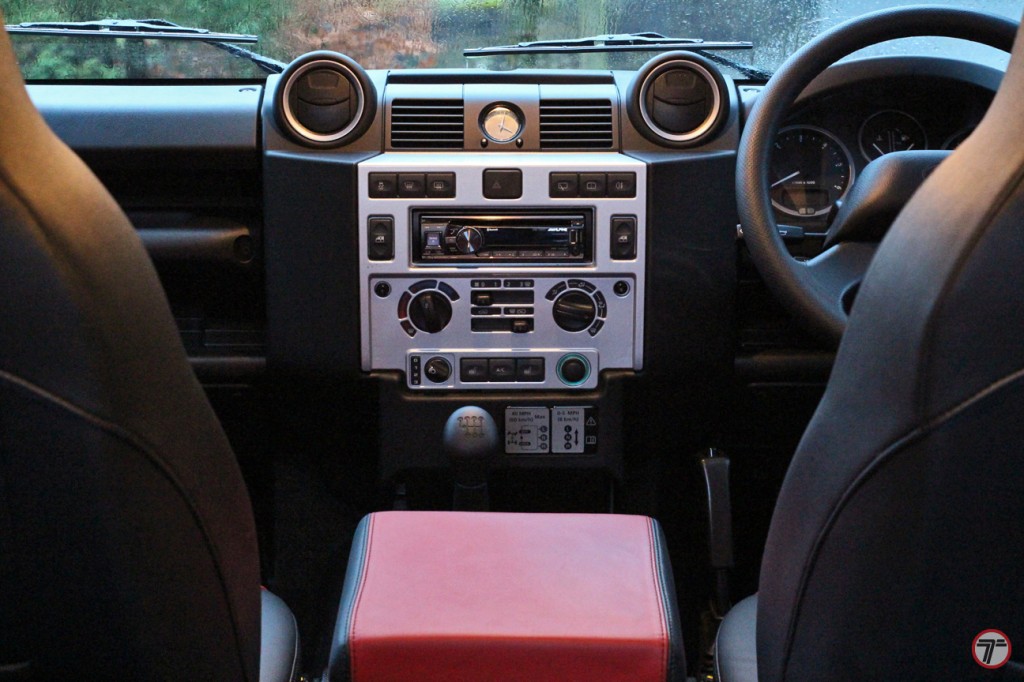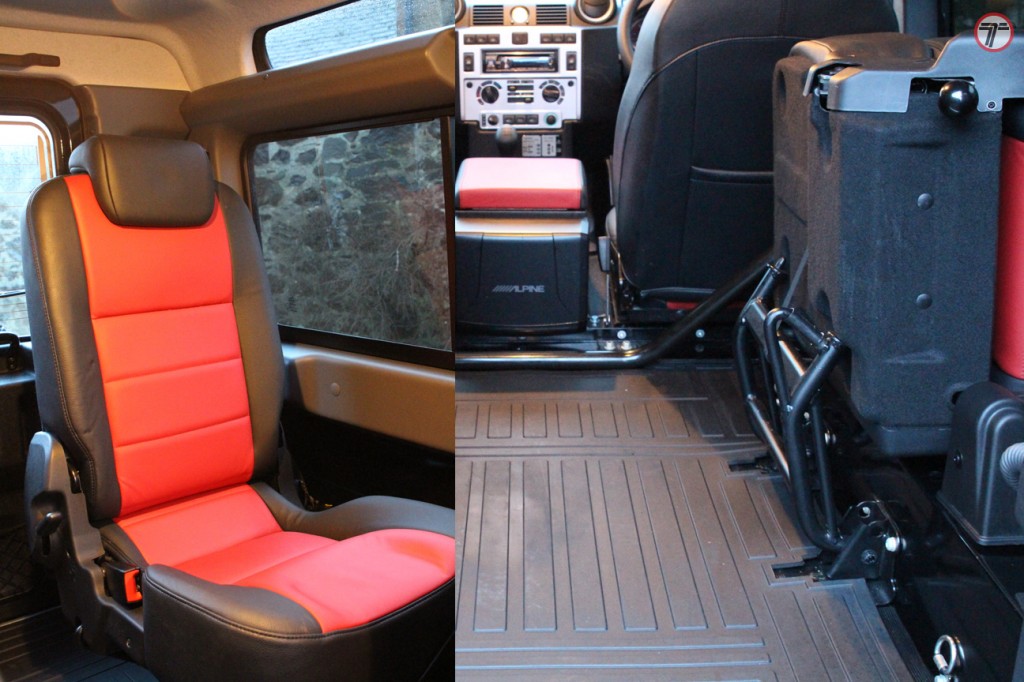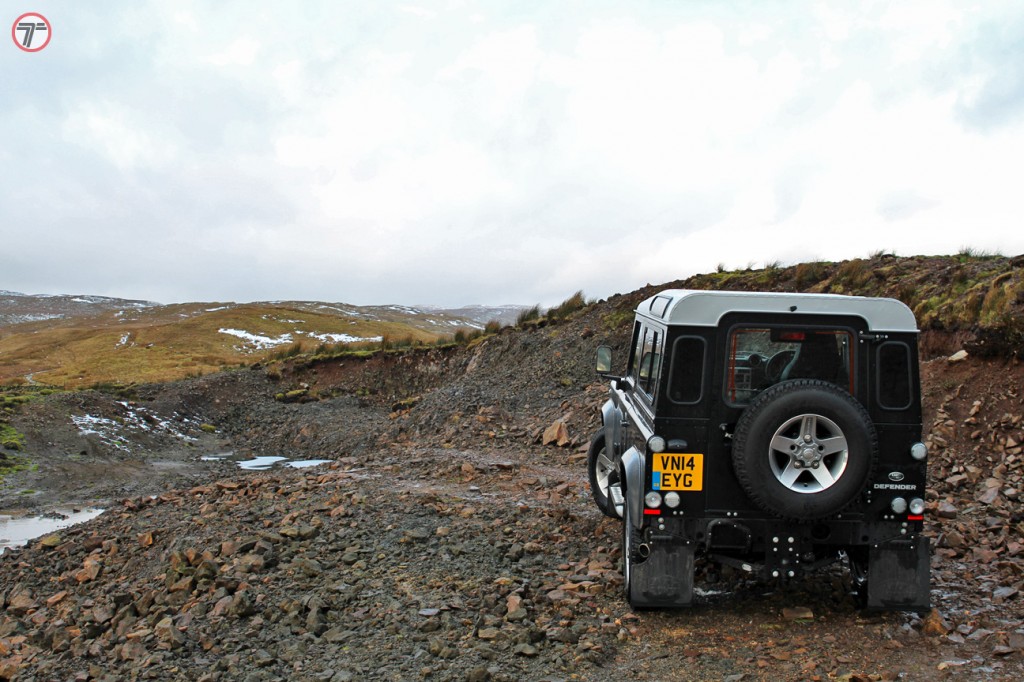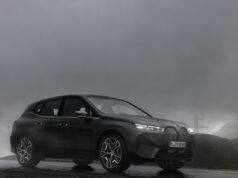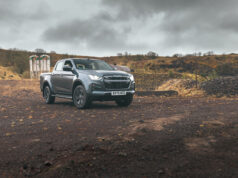
Love it or hate it, the Land Rover Defender is a motoring icon.
It’s roots, and instantly recognisable outline, can be traced back nearly 70 years to the original design famously penned by Maurice Wilks in the sand back in 1947 – an event which Land Rover recently recreated with this tribute to its creation in what is sadly, it’s final year of production.
In my opinion, it is one of those rare cars that can look at home in pretty much any situation, whether that’s half way up a Scottish hillside, parked outside a swanky London hotel or on an African safari. I lived in East Africa for a couple of years and there the Defender proved itself to be a great tool. From fighting your way through Kampala’s rush hour traffic (normal rules go out the window – 2 lanes become 4 with optional use of the pavements when required) to road trips and some pretty serious off-roading, it always did the job. Sure there were a few niggles and a Toyota Land Cruiser might be considered more reliable but it was always the Land Rover for me.
During our time there, it took us on countless safari’s, climbed rocky/muddy tracks, waded rivers and never got stuck or failed to get us where we wanted to go, so I guess it’s fair to say I’ve got a bit of a soft spot for these things.
Designed as a simple go anywhere, do anything vehicle, it has evolved over the years from the early Series I, II & III to the 90’s & 110’s and now the Defender. Fundamentally today’s model isn’t that far removed from the original. Our test car was somewhat more ‘modern’ with luxuries such as electric windows, air con, leather and heated seats, heated front windscreen and bluetooth connectivity. All nice to have but also a little at odds with its raison d’être.
So what’s it like to drive…? Trying to compare it to a modern car is pretty pointless as on the road it’s much more akin to driving a truck or van. First off, climbing in can be a challenge for some due to its height, then there’s quirky things such as the ignition key on ‘wrong’ side of the steering column and the haphazard placement of some switch gear. Once inside, the lack of elbow room is a common compliant but personally I didn’t really find it an issue – you just adapt your driving position to suit!
The front seats are surprisingly very good and likewise the rears. These are proper full size folding items and a huge improvement on Defenders of old – with the exception of the limited headroom. The bum warmers are a welcome addition too!
Once underway its square proportions make it fairly easy to place and park as you can see all four corners, although rear 3/4 visibility isn’t the best. Unfortunately the ride isn’t as comfortable as the seats and it does tend to bounce around a fair bit and things can get pretty bumpy. Obviously it isn’t fast but it does a reasonable job of keeping up with modern traffic and is happy cruising on A roads and motorways at the legal limit. The main issue is the almost comical NVH levels! This could get tiresome on longer journeys but that isn’t really what it’s designed for is it? Road, wind and engine noise are all so much higher than a modern car, along with the driving dynamics it really does feel it’s age.
What it has got is bags of character. It can be difficult to quantify what character is in relation to a car – sometimes it’s used to excuse flaws and to be honest that may be true here to a certain degree. Either way, driving the Defender did one important thing – it made me smile. In a world of boring euro boxes that’s a good thing!
Of course folk don’t buy Defenders just to use on the road… or do they? Recently there’s been an increasing trend for modifying or ‘urbanising’ them for folk who like the style but have no intention of taking them off road. Tuners such as Twisted, Urban Truck and Icon have been successful in making the Defender desirable with a whole new customer base.
Even though it’s been draped with a few modern day comforts it is still fantastically capable off road. It doesn’t have the fancy terrain response and hill descent systems of it’s more upmarket siblings, relying instead on good old fashioned permanent four wheel drive, low range transfer box and locking diffs – this doesn’t hold it back in the slightest. What it does mean is that the driver requires a bit more understanding of how to use these things rather than just pressing a button or selecting a ‘mode’ but that’s all part of the fun! It’s off road ability is superb and it does really give you the feeling that it will go anywhere and do anything, fulfilling the original design brief.
A wee play off road…
To celebrate the history of this seminal 4×4, Land Rover have produced 3 limited edition run out models, the Heritage, Adventure and Autobiography which will all no doubt be a sell out.
There is talk of production continuing overseas but if that happens it will only be for sales outside the EU so presumably it won’t be an avenue for die hard fans to source a new car. Given the high percentage of examples built that are still on the road (rumoured to be in the region of 70-75%) it will still be a common sight for awhile yet. This is a good thing as I for one will miss it. Even though I have no real need for a 4×4, I’m toying with the idea of a possible Defender project. If it goes ahead you’ll be able to follow it’s progress on the forums.
Mike.
CAR: Land Rover Defender 90 Station Wagon
PRICE: £25,265 (£30,450 as tested)
POWER: 2.2 4 cylinder diesel, 122 PS, 360 Nm
PERFORMANCE: Top speed 90 mph, 0-62 mph 14.7 secs
MPG: 27.7 combined
CO2 EMISSIONS: 269 g/km
TT RATING:




